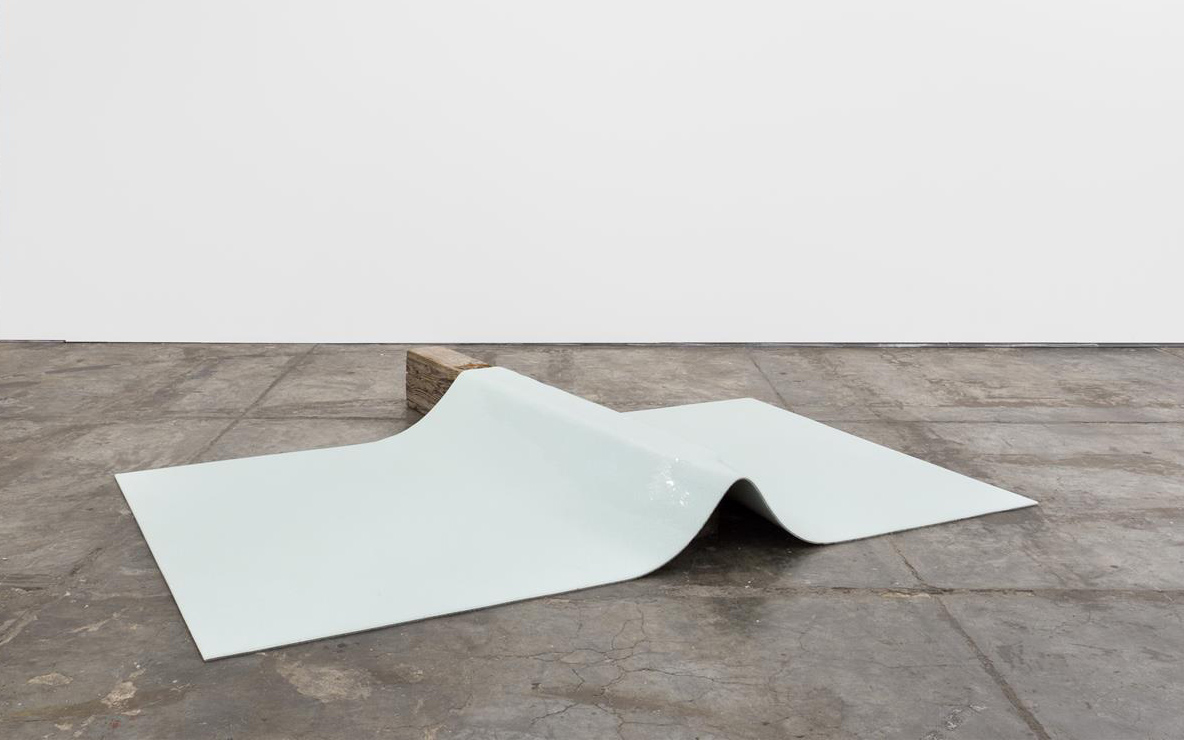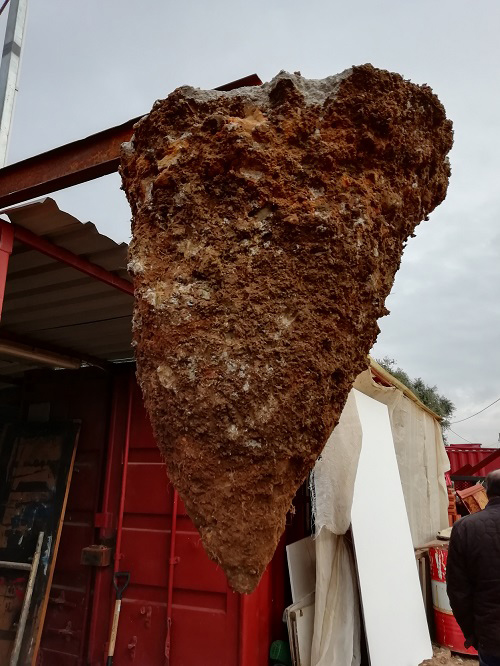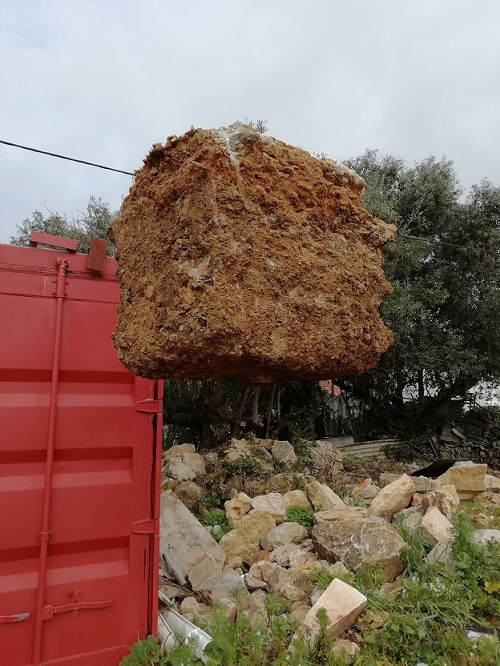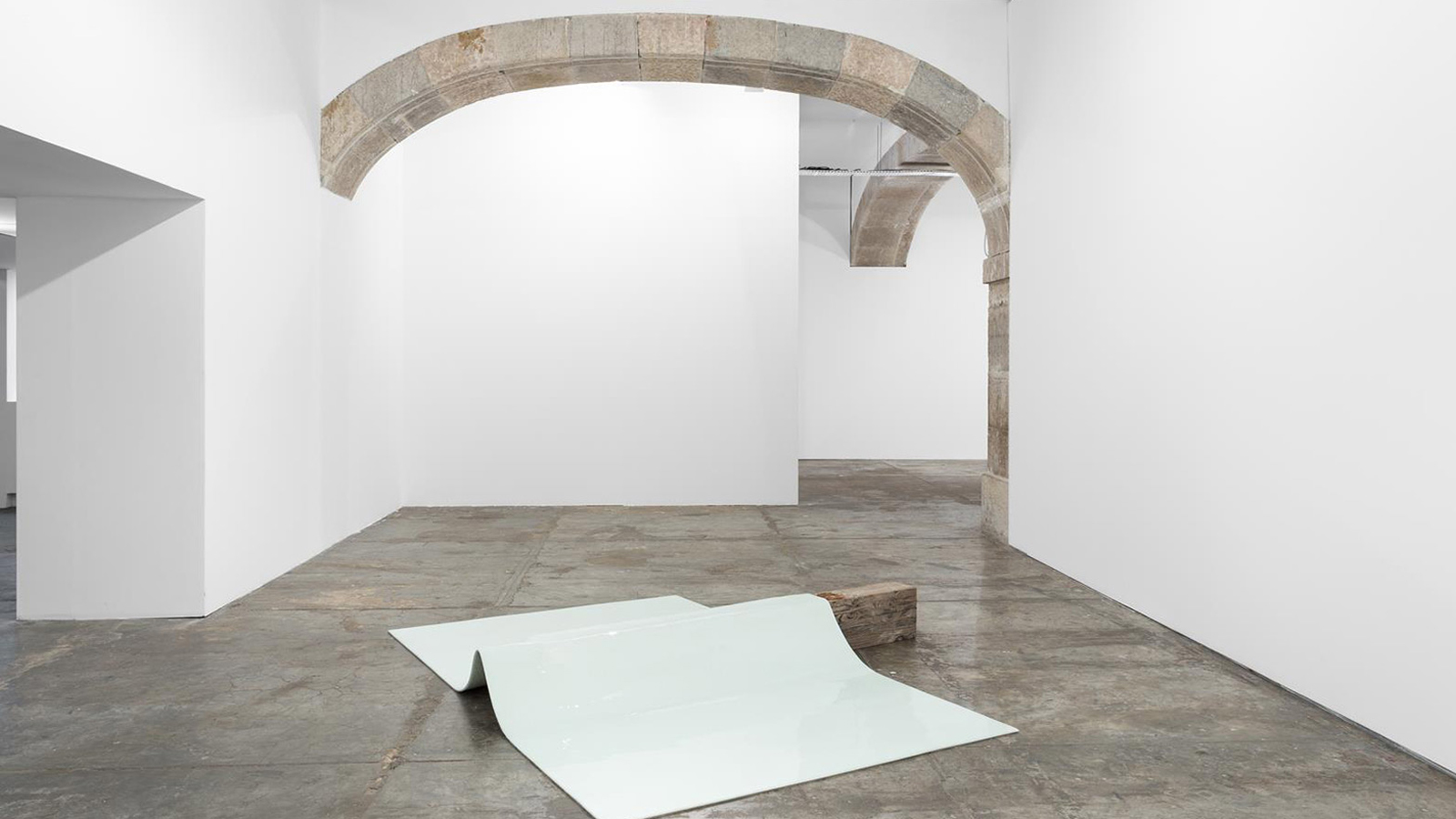New work by António Bolota
A thick pane of tempered glass is unexpectedly moulded over a wooden beam with a square cross-section, as though it were a towel. The curved form it is able to adopt is the result of a simple ploy: every time the piece is displayed, a sheet of glass is struck so that it shatters without breaking (like a car windscreen) and thus becomes malleable.
The surprise of this shape in a material that evokes rigidity is perhaps the main enigma and, for that reason, the greatest strength of the work’s aesthetic effect. Wood, a key aspect in António Bolota’s work, conveys the memory of crossbars, posts, columns and pillars in the same material, which have so often radically transformed the space in which he presents them as a site-specific installation. White glass and the careful operation to which it is subjected establish a counterpoint with the monumental force of that memory, in the elements that carry it, or simply in the soberness of the compact, dark wooden object that has its own temperature.
Minimalist and constructivist in origin, the work of António Bolota (Benguela, Angola, 1962) gradually found a firm and particular place in the contemporary Portuguese art scene.
His work reflects his interest in artists such as Martin Kippenberger, , Thomas Schultz, Wolfgang Tillmans, Richard and, perhaps more than any other, Robert Grosvenor.

A cultural agent and curator, entrepreneur and creative, António Bolota’s profile is bursting with initiatives comprising groups of artists and individual proposals for intervention in spaces, or for extended sculpture. Nuno Faria refers to the production of ‘the geometric and the organic, the air and the solid, gravity and fluctuation, the evanescent and the massive, natural and artificial, soft and hard’ in Bolota’s work (exhibition notes for Sem Escala (Without Scale) in Galeria Vera ).
António Bolota is adept at working on a large scale (with demanding installations in terms of engineering and architectural planning), although he has also mastered the technique of small- and medium-sized sculptures, like this one and those he produced for the exhibition Ser Sombra (Being Shadow), at the Fundação Carmona e Costa, in 2019. His training as an engineer and his architectural sensitivity are not unconnected to this ability that allows him to produce forces like gravity, weight, attraction, tension or equilibrium, scale, a relationship with the floor or the roof, with the observer’s body, with the rigour of the drawing and the finishings and the materials.
The pieces he designed and produced ‘are halfway between two-dimensional and three-dimensional, but the question that groups them together is not one of scale or volumetrics; it has to do with the way they emerge from the plan and conquer the space, unfolding their materiality, shadow and colour. Leaving the page as a lowest common denominator, the potential and experimental space of the drawing emerges from the unfoldings, intersections, geometric digressions, cross-references or quotations, more or less voluntary, of key moments in the history of art (Russian constructivism, Dutch neo-plasticism, suprematism, the Brazilian neo-concrete movement, not to mention Ângelo de Sousa and Sol LeWitt), concrete abstractions or material experimentations in a movement of great creative freedom that generates difference based on repetition’ (idem, exhibition notes).



In Bicesse/Estoril, his expanded concept of a studio includes warehouses, sawmills, carpentry shops, open ground, workshops and offices. There is a kind of extended occupation of spaces and of people in several of his pieces, which cross paths with his work as an engineer and with his artisanal and constructive fantasy in the art world, using various collaborators on occasion. Every possibility, from the crudest, heaviest piece to the most delicate, like this one, is guaranteed in this real territory of multifaceted work.
In 2009, António Bolota was nominated for the EDP New Artists Award.

